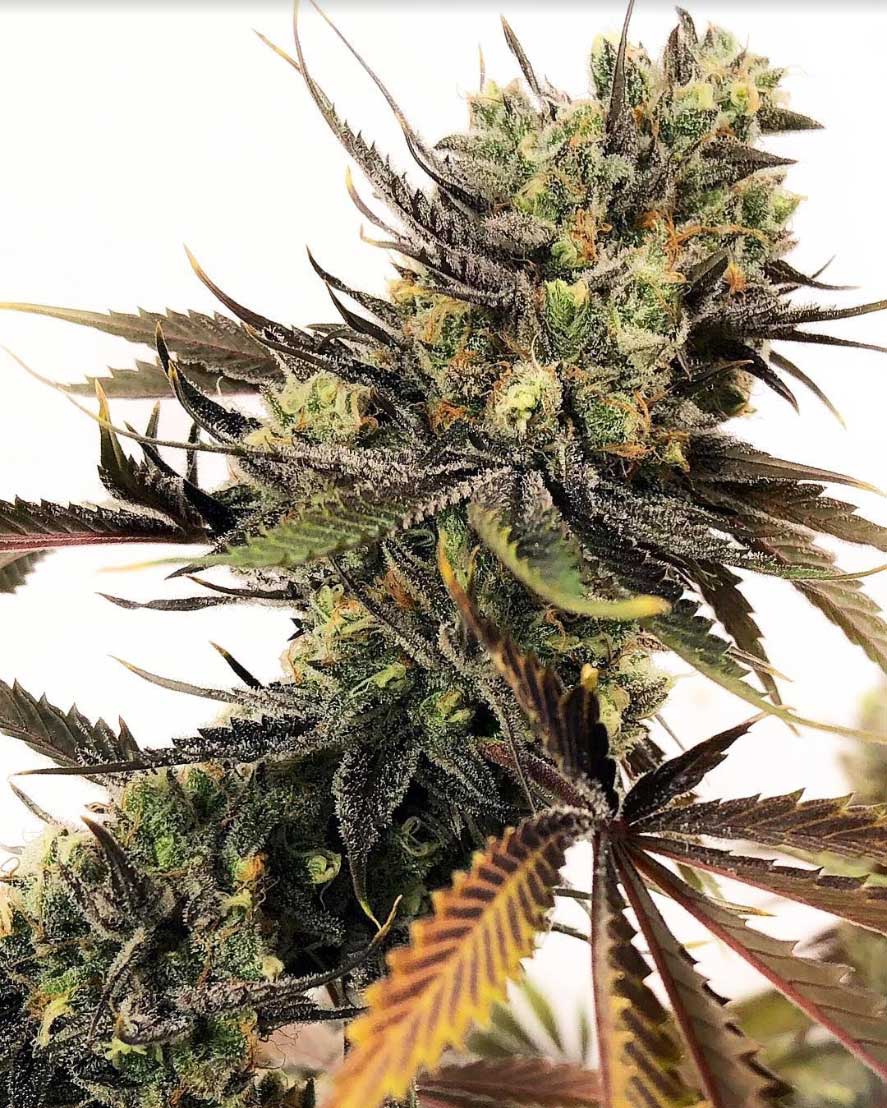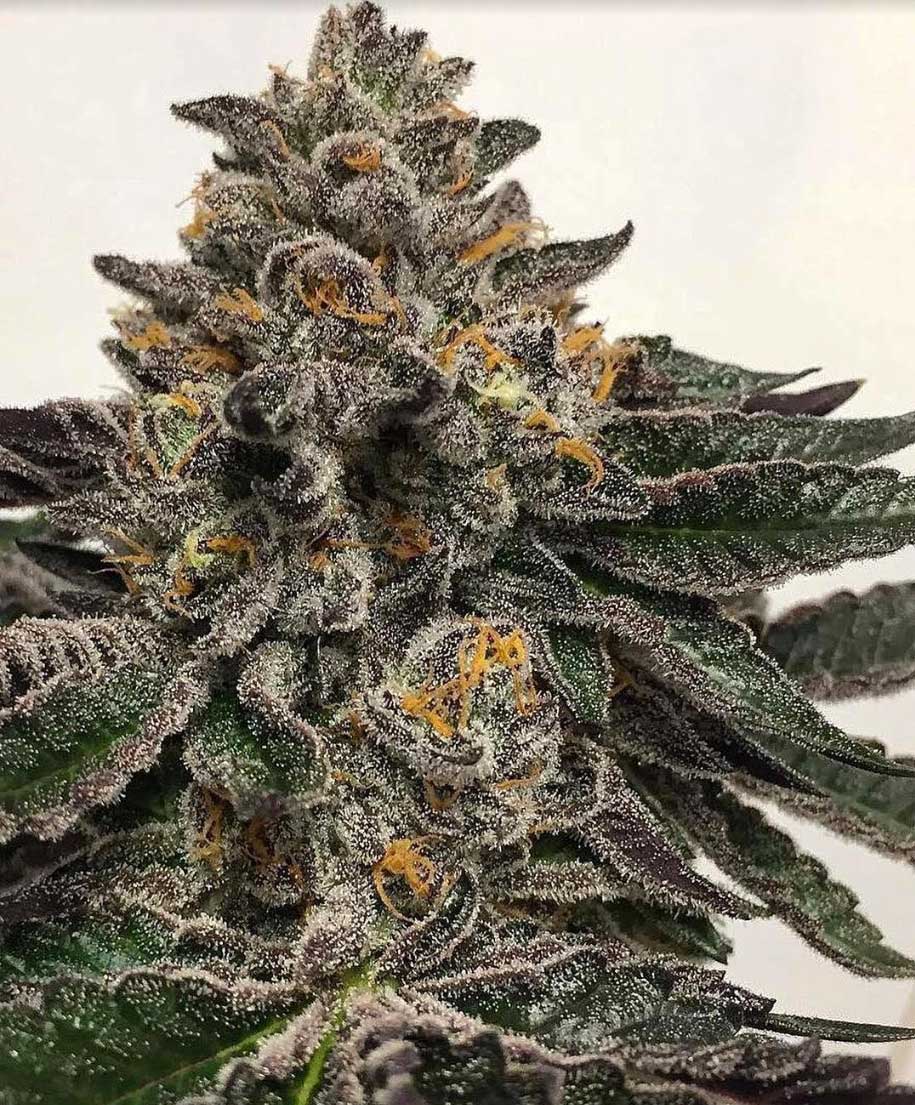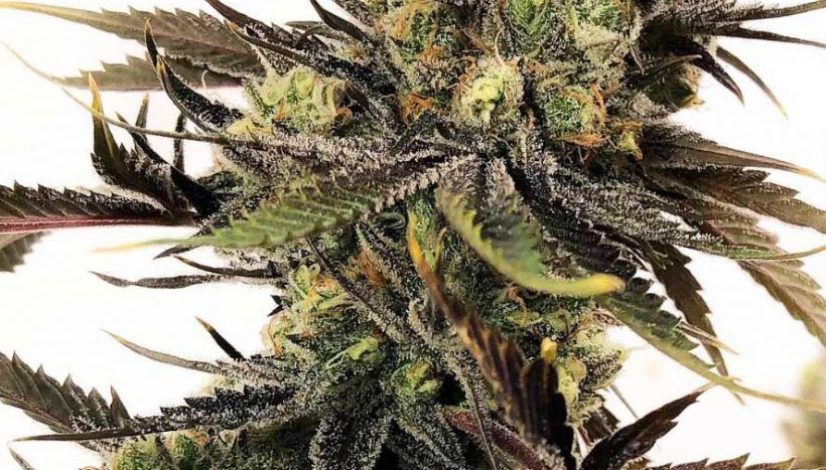The High Times Interview: Compound Genetics
The post The High Times Interview: Compound Genetics appeared first on High Times.
Want to know some specifics about breeding cannabis? Know the difference between regular and feminized seeds? Ever heard of an S1, F1 or F2? Do you have any idea what any of it means? I got the chance to link up with Compound Genetics in Portland, Oregon a few month back, and I was lucky enough to sit down with them and talk a little bit about different breeding methods and some terms that are commonly used.
High Times: Can you please explain what an F1 and F2 are when it comes to breeding cannabis?
Compound Genetics: F1 is the first generation [of plants] from unrelated parents. You take a male and a female, you cross them and you create an F1. The F2 is when you work that first generation into the second generation. For example, you could take a Legend Orange Apricot F1, which would be an Orange Apricot male to a Legend OG female, which are completely unrelated parents. When you cross them, the seeds that come from that will be the Legend Orange Apricot F1 generation.
To create the F2, you would take a male from that first generation that you selected from seed and a female from that first generation that you want to breed into the next generation. You would pollinate the F1 female with the F1 male pollen, and the seeds that will be produced will be the Legend Orange Apricot F2.
If you work that into an F3 and F4, once you get past F4, you are in IBL. To do that successfully, you really need to make sure you don’t lock down too many of the same traits, and you’re not bottlenecking because you can create a big mess if you lock down too many of the same traits. You want to keep the gene pool open.
Once you get past F1, it becomes really advanced breeding. F2’s can be a big mess if they aren’t done right. You can send it in the wrong direction by selecting bad parents. F2’s should be left to people who know what they are doing. Very few people work into the F2 and beyond anymore. More people are playing in the F1 generations.

Legend Orange Apricot (Photo Courtesy of Compound Genetics)
HT: What can you tell us about S1’s and feminized seeds?
CG: It’s also called “selfing.” It’s a part of making feminized seeds in a sense. I think people confuse it with bag seeds sometimes. Bag seeds aren’t always S1’s. Bag seed can be an S1, or it can be from pollen on you floating around and you brush up against a plant. If it’s on you and you brush up against a plant, you just pollinated a plant. S1’s could be made other ways too. It can be caused naturally, like stressing the plant so it forces itself to make S1’s—whether it’s light leaks, feeding or mistreating. S1’s could be created by a breeder, by part of a reversal where they actually spray a mixture of chemicals onto a plant, and it will turn a female plant into a male plant over time.
For example, if I took a Jet Fuel Gelato female and reverse it to force it to turn into a male, I collect the pollen from that reversal,and hit it onto a Jet Fuel Gelato female, the seeds from that cross would be the Jet Fuel Gelato S1’s, which would be the feminized version of Jet Fuel Gelato
S1’s are feminized; 99 percent of feminized seeds will be female. S1 and R1 are considered different. R1 is the equivalent of a feminized F1. F1 is the regular version. Regular is the industry term for a male seed. Feminized is the industry term for a reversed seed or feminized seed. You get feminized seeds from reversing, and you get regular seeds from using a male. The method you would do for S1’s would be the same thing you do to make feminized seeds. You spray it on the plant in certain periods of the early flower cycle, and it makes the plant switch sexes. You can take any female plant and spray over a two to three week period. It won’t grow any female flowers at all. It will actually start to grow male flowers. The whole plant will turn into a complete male. It will release pollen, but reversed plants never release the same amount of pollen as a male plant. Male pollinations will almost always have more seeds. That’s why many breeders prefer males because you can get so many more seeds, and you can do a lot more with males.
With reversals, it’s kinda hit or miss. You can get a small amount of pollen, or sometimes you can get almost no pollen. Some plants don’t want to spit pollen when you reverse them. If you are reversing a plant and you want to create a bunch of seeds, you going to need to reverse a lot more plants to collect enough pollen versus having a male around which dumps pollen. I would need two males to pollenate a grow room the size of this hotel room. It would take 20 reversed plants to do the work two males can do, and you would have to apply the pollen with direct contact, like brushing the pollen on the plants or hitting the females with a male branch. You have to actually work the plant to spread the pollen, because it’s not dumping pollen like the males plants would. There are a lot of different methods you can use to apply reversed pollen onto other plants.

Jet Fuel Gelato (Photo Courtesy of Compound Genetics)
Feminized seeds kinda have a stigma in the industry. People frown a little bit upon them as if they are made from Monsanto. Genetically modified, not natural, they really have their purpose. The fact that you can run a whole garden of feminized seeds, and you don’t have to worry about weeding out or selecting males. For a beginner grower, it’s perfect. For someone who doesn’t know how to select males, they can just take feminized seeds, run them, and know they do not have to worry about finding any males pollenating their crop and losing their crop because a male slipped through the cracks.
HT: Can you tell me more about hermaphrodite plants?
CG: It definitely is an unstable trait, and it’s definitely more prevalent in untested and unworked gear that is bred from unstable plants. If you are going to create a feminized seed, one of the most important things about fems is that you should never reverse a plant that is unstable. If you reverse a plant that has unstable traits, it’s going to continue those traits onto the next generation.
HT: Can regular plants still throw out herms?
CG: Oh, yeah. Definitely. It can be from that same factor from breeding unstable traits to begin with or environmental issues. In general, it’s usually a genetic trait. Strong genetics that are worked well won’t hermaphrodite under any circumstances. Sometimes when you run seeds from the first generation, some will hermaphrodite, but if you clone them and run them again, that trait won’t come out once you don’t run them from seed. I don’t know exactly why that is true, but it definitely happens. I advise anybody running from seed that experiences hermaphrodites, if it’s a plant that looks real good late in flower, run it again from clone and see what happens. Sometimes, those traits don’t come out in clone. You really can’t do anything to stop them.
I don’t recommend people spraying “Switch” or anything like that. Same goes for any chemical product that’s going to revert your plant back. If your plant is showing that trait, you should either be prepared to live with that trait, eliminate that plant, try to breed it out by outcrossing or crossing it over a few generations, or reverse something onto it that’s going to help eliminate that trait.
HT: What would be your preferred method for collecting pollen, and around what time is best to harvest pollen from the males? Do different males throw out pollen at different times?
CG: Males throw out pollen usually between week 3.5 – 5. That’s usually when they are known to drop pollen. After week 6 or 7, they kind of get spent. If I was going to collect pollen, I would try to collect it around week 4.
There are various ways you can collect it. You can just go up to the male and get a bag, box or something like that and collect it over time by leaving the bag or box open under the plant, or you can take a whole branch of the plant and just literally put it in a bag, just shake it, and all the pollen will come off. Then, you will be left with the male parts of the plant. What you can do with that is take the male pollen sacs, sift or filter it out, then you are left with this fine powder. Ultimately, you just want to have just powder, and storing it clean and dry. The key to saving pollen long periods of time is having it dry. Moisture is the killer for pollen. Light as well. Anything that is bad for dried cannabis will be bad for pollen.

Sour Gelato (Photo Courtesy of Compound Genetics)
HT: What’s the longest you can keep properly stored pollen viable before having to go through another round to collect pollen?
CG: If it’s stored properly, you can keep it for a long time, but generally pollen tends to fade after a year or two. It’s not something that should be your long-term [plan] for saving genetics. To save them long-term, you have to save them in seed form. The best method is using a male of course, but to get the true genetics into seed form, if you can self it, that’s how you can really save anything. If you want to save all your cultivars, S1 everything. You will have pure versions of those clones only in feminized seed form. When you hunt those seeds, you can find the same traits and exact same examples of the mother plants you’re reversing, plus you might find versions that are even better.
S1’s will have the same exact phenotypes that you reverse, plus it will have other unique versions. You can find some better versions of the clone-only mom in the S1’s. If you are trying to save your genetics for a long [time], S1′ s might be the way to go.
The post The High Times Interview: Compound Genetics appeared first on High Times.


